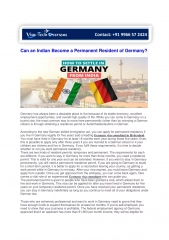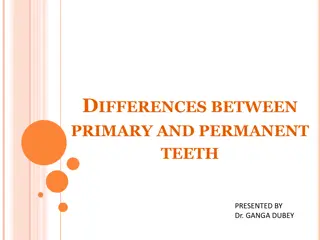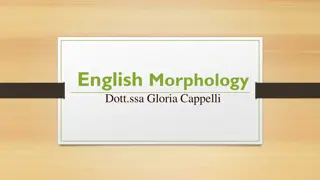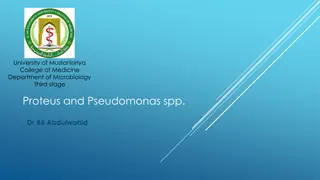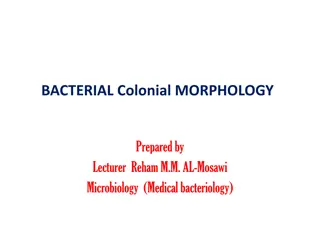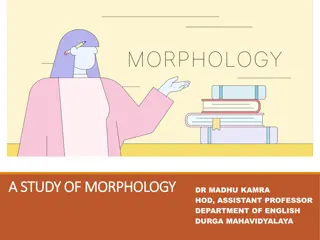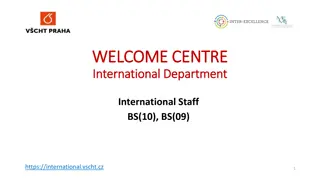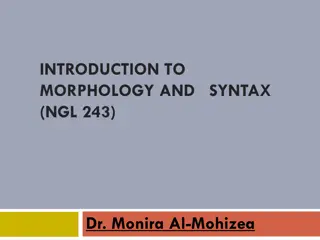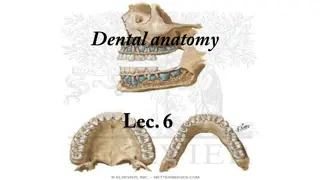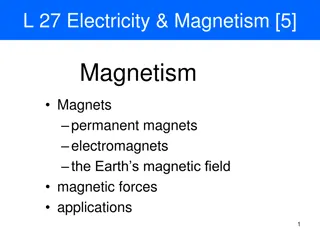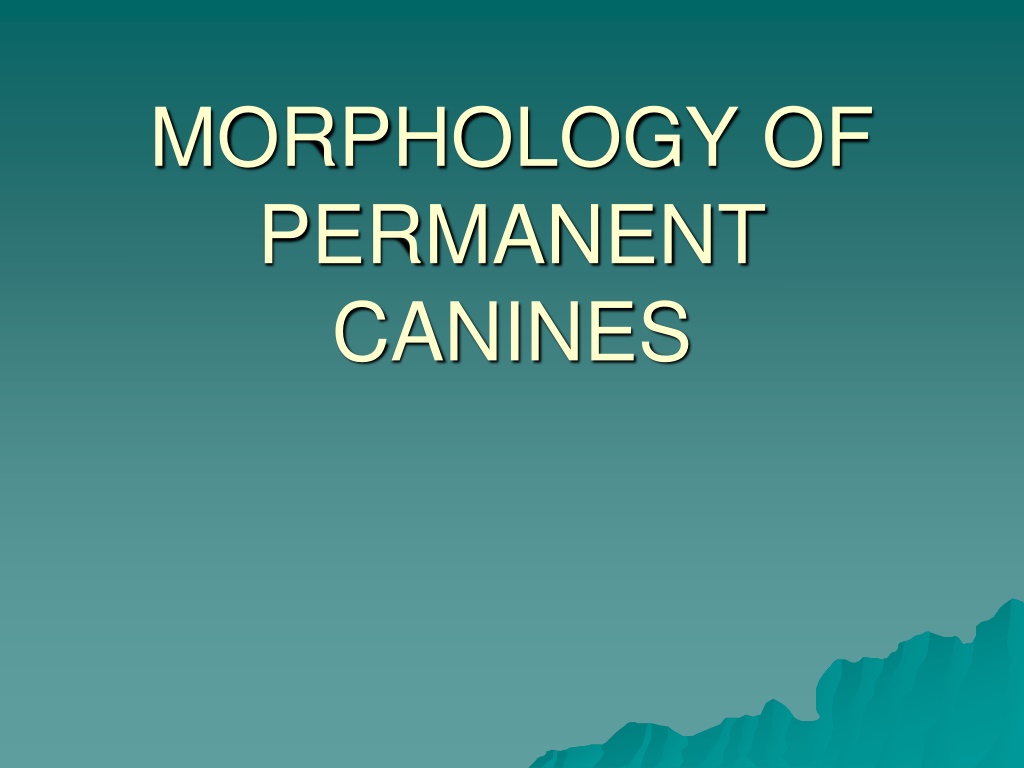
Permanent Canine Morphology and Functions
Explore the morphology and functions of permanent canines, including their numbering system, eruption times, importance in occlusion, and role in supporting facial muscles. Learn about their unique traits, such as being the longest teeth in the mouth and serving as stable anchor teeth. Discover the specific characteristics of permanent maxillary canines and their labial aspect.
Download Presentation

Please find below an Image/Link to download the presentation.
The content on the website is provided AS IS for your information and personal use only. It may not be sold, licensed, or shared on other websites without obtaining consent from the author. If you encounter any issues during the download, it is possible that the publisher has removed the file from their server.
You are allowed to download the files provided on this website for personal or commercial use, subject to the condition that they are used lawfully. All files are the property of their respective owners.
The content on the website is provided AS IS for your information and personal use only. It may not be sold, licensed, or shared on other websites without obtaining consent from the author.
E N D
Presentation Transcript
MORPHOLOGY OF PERMANENT CANINES
INTRODUCTION Four in number Numbering system Palmer notation: 3 3 FDI system 13,23,33,43 Eruption time- Max Canine: 11-12years Mand Canine: 9-10years Longest teeth in the mouth and most stable of all teeth Last teeth to exfoliate 3 3
Introduction Cornerstone of the dentition Middle labial lobe is highly developed into strong well formed cusps. Hence canine is also known as cuspid teeth . Maxillary canine is the most common teeth to be impacted in the maxillary arch
FUNCTIONS Support to the lip and facial muscles To cut, pierce or shear food particles Important guide post in occlusion Serve as a good anchor teeth for a fixed dental bridge or RPD when adjacent teeth are lost Very important teeth in maintaining natural facial expression
CLASS TRAITS OF CANINES Longest teeth in the mouth Labio-lingual dimension > mesio-distal dimension FACIAL VIEW Crowns are pentagon shaped Mesial cuspal slopes shorter than distal slopes Crown outlines are more convex on mesial and flatter on the distal Roots are wider labio-lingually than mesiodistally
Class traits Proximal view Wedge shaped Facial and lingual crest of curvature are in the cervical 3rd Cervical lines are convex towards the apex
PERMANENT MAXILLARY CANINE Cervico-incisal length: 10mm Root length: 17mm Root is thick labiolingually with mesial and distal development depressions that help to furnish the secure anchorage to the bone
LABIAL ASPECT Labial surface-smooth with no developmental depressions Middle labial lobe shows much greater development and produces a ridge on labial surface- LABIAL RIDGE Mesial outline: convex from cervix to the centre of mesial contact area; crown may exhibit slight concavity above the contact area Mesial contact area: junction of incisal and middle 3rd
Labial aspect Distal outline: concave between the cervical line and distal contact area above which it may be slightly convex. Distal contact area: centre of the middle 3rd Two cuspal slopes: Mesial and Distal Mesial slope is shorter than the distal slope Cusp tip is in line with the centre of the root Cervical line is convex, with the convexity facing the root surface
Labial aspect ROOT Labial surface of the root is smooth and convex at all points Appears slender from this aspect when compared to the bulk of the crown Conical in shape with a bluntly pointed apex Apical third of the root has a sharp curve, mostly in the distal direction
LINGUAL ASPECT Crown and root are narrower lingually than labially. CROWN Cingulum is large and sometimes pointed like a small cusp Cingulum and tip of the cusp are usually centered mesiodistally Lingual ridge is seen which is confluent with the cusp tip and extends to a point near the cingulum
Lingual aspect Marginal ridges: Mesial and Distal Distal marginal ridge: slightly more elevated Mesial marginal ridge: longer, because of the shorter mesial cuspal slope and the location of the mesial contact area. Fossae: shallow concavities present between lingual ridge and marginal ridges Two fossae are seen: Mesial lingual fossa : Distal lingual fossa
Lingual aspect Lingual fossae appear as shallow concavities Cervical line shows a more even curvature ROOT Lingual portion of the root is narrower due to which much of the mesial and distal surface of the root is visible Lingual surface is smooth and convex at all points
MESIAL ASPECT Crown outline: Wedge shaped Labial outline: flattened surface from cervical line to crest of curvature; below the cervical line the surface is convex up to the cusp tip Labial crest of curvature: cervical 3rd Lingual outline: represented by a convex line describing the cingulum, straight in the middle 3rd becoming convex again in the incisal 3rd Lingual crest of curvature: cervical 3rd
Mesial aspect Cervical line curves towards the cusp, approx. being 2.5mm Cusp tip is labial to the line bisecting the root ROOT Conical, tapered or bluntly pointed apex, with occasional labial curvature. Labial outline almost perpendicular with lingual outline being more convex Shallow developmental depression running for part of the root length
DISTAL ASPECT Following variations when compared to mesial aspect Cervical outline exhibits less curvature Distal marginal ridge heavier and more irregular Surface displays more concavity usually above the contact area Development depression more pronounced
INCISAL ASPECT Labio-lingual dimension> Mesio-distal dimension Cusp tip is labial to centre of the crown labio-lingually & mesial to the centre mesio- distally Labial contour: convex labial surface Labial ridge is very noticeable, greatest convexity at cervical 3rd, becoming broader and flatter at middle and incisal 3rd Lingual contour: cingulum makes up cervical 3rd, large and located centrally





